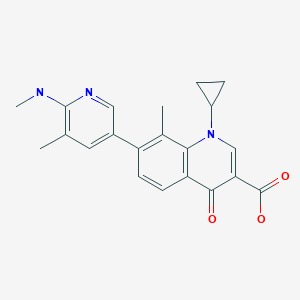Attribution Statement: LactMed is a registered trademark of the U.S. Department of Health and Human Services.
NCBI Bookshelf. A service of the National Library of Medicine, National Institutes of Health.
Drugs and Lactation Database (LactMed®) [Internet]. Bethesda (MD): National Institute of Child Health and Human Development; 2006-.
CASRN: 245765-41-7

Drug Levels and Effects
Summary of Use during Lactation
No information is available on ozenoxacin cream during breastfeeding. Because ozenoxacin is poorly absorbed after topical application, it is not likely to reach the bloodstream of the infant or cause any adverse effects in breastfed infants after maternal application away from the breast. Although quinolones are generally acceptable for systemic use, ozenoxacin should be avoided on the nipple because the infant could ingest the drug via licking.
Drug Levels
Maternal Levels. Relevant published information was not found as of the revision date.
Infant Levels. Relevant published information was not found as of the revision date.
Effects in Breastfed Infants
Relevant published information was not found as of the revision date.
Effects on Lactation and Breastmilk
Relevant published information was not found as of the revision date.
Alternate Drugs to Consider
Substance Identification
Substance Name
Ozenoxacin
CAS Registry Number
245765-41-7
Drug Class
- Breast Feeding
- Lactation
- Quinolones
- Anti-Infective Agents, Local
- Anti-Bacterial Agents
Disclaimer: Information presented in this database is not meant as a substitute for professional judgment. You should consult your healthcare provider for breastfeeding advice related to your particular situation. The U.S. government does not warrant or assume any liability or responsibility for the accuracy or completeness of the information on this Site.